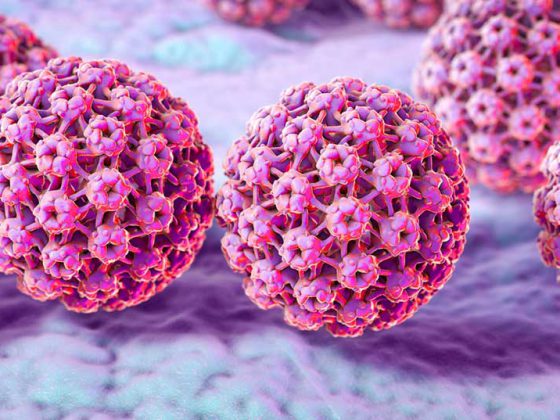Guidelines are intended to help introduce uniform standards with recommendations based on evidence-based data for diagnostics, therapy and follow-up care. At the annual meeting of the German, Austrian, and Swiss Societies for Hematology and Medical Oncology (DÖSGHO), changes in the German S3 guideline on renal cell carcinoma were presented. An update was also given for the treatment of multiple myeloma, focusing on the treatment algorithm and the place of stem cell transplantation in the era of new agents.
Updated recommendation for second-line renal cell carcinoma therapy.
The new S3 guideline on the diagnosis, treatment, and follow-up of renal cell carcinoma, published in September 2015, commented on 43 key questions, including 5 key questions on systemic therapy. Four of these questions about first-line agents, second-line agents, treatment sequences, and combination therapies were answered with de novo searches from 2002-2013. At the time the guideline was written, tyrosine kinase inhibitors (TKIs) were available for drug therapy. 1st generation (sunitinib, pazopanib, sorafenib), the 2nd generation (axitinib) and mTOR inhibitors (temsirolimus, everolimus) are available. Today, the PD1 inhibitor nivolumab and the TKIs of the 3rd generation lenvatinib and cabozantinib the armamentarium of renal cell carcinoma therapy, noted Prof. Viktor Grünwald, MD, Hannover Medical School.
Nivolumab was approved in March 2016 based on a head-to-head study against everolimus in patients with advanced renal cell carcinoma after one or two prior lines of therapy [1]. Nivolumab significantly reduced the risk of death by 27% (p=0.002). Cabozantinib has also been evaluated head-to-head against everolimus in advanced renal cell carcinoma after at least one prior therapy [2]. The risk of death was significantly reduced by 34% (p<0.0001). Cabozantinib was approved for the treatment of renal cell carcinoma in September 2016.
Also in September 2016, approval was granted for the combination of lenvatinib plus everolimus based on the results of a Phase II study in the second-line setting. The combination was evaluated in a three-arm study against everolimus alone and lenvatinib alone and achieved a reduction in the risk of death compared to monotherapies of 60% (p=0.0005) and 34% (p=0.12), respectively [3]. Response was 25% (nivolumab) vs. 6%, 17% (cabozantinib) vs. 3%, and 35% (lenvatinib/everolimus) vs. 0%, respectively, compared with everolimus monotherapy in the three trials.
According to the new 2016 recommendations, second-line therapy after failure of VEGF-based therapy should consist of nivolumab or cabozantinib. A specific sequence of substances cannot be recommended, Grünwald said. After failure of the two substances, it is possible to switch to the other substance. After failure of a VEGF inhibitor, lenvatinib plus everolimus can also be used as second-line therapy. The recommendation for everolimus after failure of at least one VEGF inhibitor was toned down from “should” to “may.” Similarly, the use of axitinib after sunitinib or cytokines was changed from a “should” to a “may” recommendation. Thus, the current therapy recommendation for second-line after cytokines is axitinib as standard and pazopanib or sorafenib as option, after VEGF failure nivolumab or cabozantinib as standard and axitinib (after sunitinib), lenvatinib/everolimus, or everolimus as option, and after temsirolimus axitinib, cabozantinib, pazopanib, sorafenib, or sunitinib. Combination therapies, with the exception of the combination of lenvatinib plus everolimus, should only be conducted within clinical trials.
According to the amended recommendations, therapy should be changed only after documented confirmed progression, because checkpoint inhibitors may cause a transient increase in size during the initial treatment phase. This also influences therapy management: to avoid pseudoprogression, the first tumor control with checkpoint inhibitors should not occur until after 12 weeks. Among other ongoing systemic therapies, cross-sectional imaging is still recommended every 6-12 weeks. In patients with mild symptoms, good general condition (ECOG PS 0-1)and good tolerability, progression under nivolumab should be confirmed by follow-up. For the management of immune-related adverse events, a new recommendation has been included that patients receiving nivolumab therapy should be monitored closely for immune-mediated adverse events for up to 12 months after the end of therapy. If immunotherapy-associated side effects occur, they should be treated immediately.
New and enduring therapeutic paradigms in multiple myeloma.
One discussion in multiple myeloma concerns younger, transplant-eligible patients, in whom new agents may replace high-dose chemotherapy (HD) plus autologous stem cell transplantation (ASZT) as standard treatment, noted Prof. Hermann Einsele, M.D., University Hospital Würzburg. Tumor biology arguments for early HD+ASCT include the limited effect of new agents on myeloma cells and the high genetic instability of the disease. The treatment leads to new mutations and chromosomal changes, but also to the selection of resistant clones, Einsele explained. If long-term freedom from disease is to be achieved, he said, it makes sense to implement intensive therapy early on to achieve deep remissions. Therefore, in patients <70-75 years of age without significant comorbidities, HD+ASCT is still the first-line therapy of choice. However, the success of therapy could be magnified by tandem HD and subsequent consolidation or maintenance therapy, he said.
In the relapsed/refractory situation, there are attractive targets that can be attacked with new drugs, explained Prof. Dr. Christoph Driessen, Cantonal Hospital St. Gallen. However, the number of new medications (carfilzomib, daratumumab, elotuzumab, ixazomib, panobinostat, pomalidomide) and combination options make the field very confusing. Driessen therefore sorted the treatment options according to the stage of the disease and the number of previous therapies as well as the general condition of the patient or the reasonable number of clinic contacts per week (Tab.1). Therapy-sensitive patients with poor general condition could thus be treated with lenalidomide plus dexamethasone (Rd) and possibly ixazomib; for refractory patients with poor general condition, pomalidomide plus dexamethasone or cyclophosphamide plus dexamethasone could be considered. Patients with intermediate general health who could reasonably be expected to have one contact per week could be given Rd in combination with elotuzumab or daratumumab and bortezomib plus dexamethasone (Vd) in the case of therapy-sensitive disease. In refractory disease, pomalidomide/cyclophosphamide/dexamethasone, daratumumab monotherapy, Vd, or bendamustine may be used. For the fit patient with therapy-sensitive disease, therapies of choice would be ASZT, Vd, daratumumab plus Vd, carfilozmib plus dexamethasone (Kd), or carfilzomib plus Rd, and in the refractory situation, Vd plus panobinostat.

Source: Annual Meeting of the German, Austrian and Swiss Societies of Hematology and Medical Oncology, October 14-18, 2016, Leipzig, Germany.
Literature:
- Motzer RJ, et al: Nivolumab versus everolimus in advanced renal-cell carcinoma. N Engl J Med 2015; 373: 1803-1813.
- Choueiri TK, et al: Cabozantinib versus everolimus in advanced renal-cell carcinoma (METEOR): final results from a randomised, open-label, phase 3 trial. Lancet Oncol 2016; 17: 917-927.
- Motzer RJ, et al: Lenvatinib, everolimus, and the combination in patients with metastatic renal cell carcinoma: a randomised, phase 2, open-label, multicentre trial. Lancet Oncol 2015; 16: 1473-1482.
InFo ONCOLOGY & HEMATOLOGY 2016; 4(7-8): 24-26.












